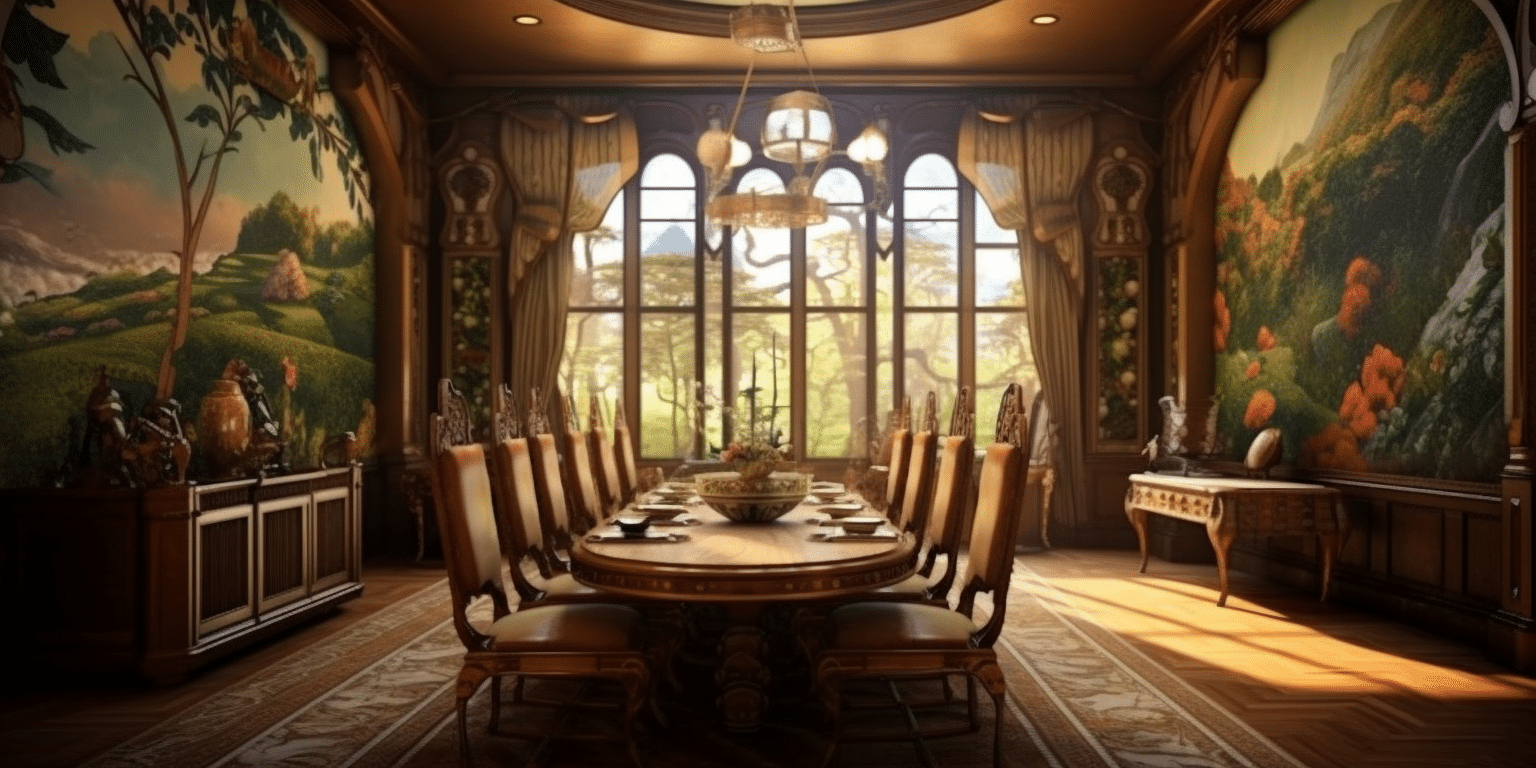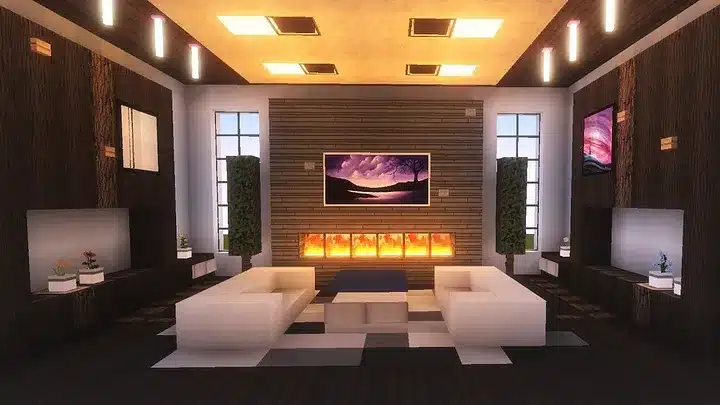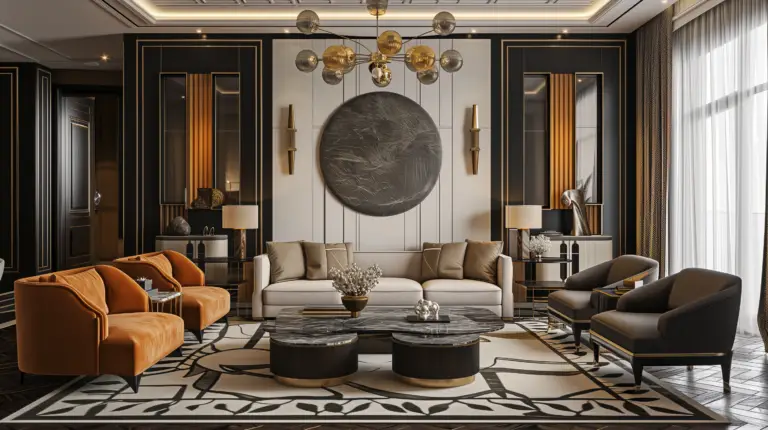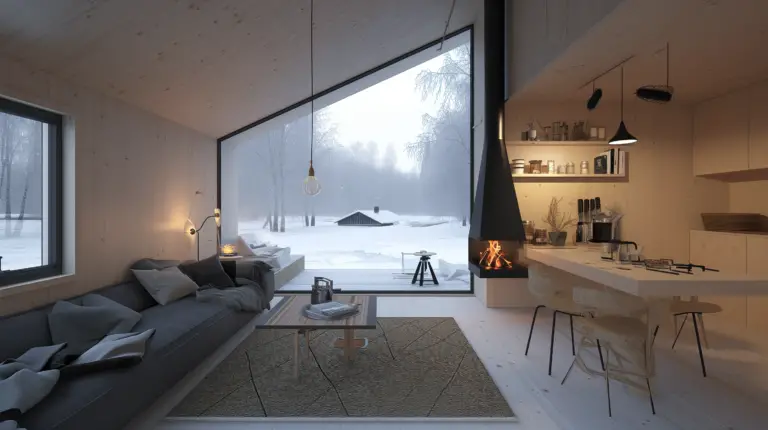Free Shipping On All Orders
Must haves in Art Nouveau Interior Design

Are you tired of the same old interior design styles that have been around for ages? If so, you might want to consider Art Nouveau interior design. This style emerged in the late 19th century and was popular until the outbreak of World War I. Art Nouveau is characterized by its use of flowing lines, organic shapes, and intricate details that often incorporate natural elements like flowers and leaves.
Art Nouveau is more than just a design style; it’s a philosophy that emphasizes the unity of all art forms. This means that everything from furniture to wallpaper to lighting fixtures should work together to create a harmonious whole. Art Nouveau designers often incorporated elements of nature into their work, believing that the natural world was the ultimate source of beauty and inspiration.
If you’re looking to create a unique and visually stunning interior, Art Nouveau might be just what you need. With its emphasis on organic shapes and intricate details, this style is sure to make a statement in any room. So why not give it a try and see how it can transform your home?
Origins of Art Nouveau
If you’re a fan of interior design, you’ve likely heard of Art Nouveau. This movement, which flourished between 1890 and 1910, is known for its sinuous, organic lines and ornamental style. But where did it come from, and what influenced its creation?
Art Nouveau was born out of a desire to break free from the historical styles that had dominated the design world for centuries. Its roots can be traced back to France and Belgium, where a group of artists and designers sought to create a new aesthetic that was both modern and innovative.
Influenced by the Arts and Crafts movement, as well as Japanese art and design, Art Nouveau was characterized by its use of flowing, natural forms. Artists drew inspiration from plants and flowers, creating designs that were both elegant and organic.
The movement quickly spread to other parts of Europe and the United States, where it gained popularity among architects, interior designers, and artists. In the United States, Art Nouveau was often referred to as “Jugendstil,” a term borrowed from the German art magazine Jugend.
Despite its short lifespan, Art Nouveau had a lasting impact on the design world. Its emphasis on organic forms and decorative elements can still be seen in many contemporary interior design styles.
Art Nouveau Style and Characteristics

Curves and Flowing Lines
One of the most distinctive features of Art Nouveau is the use of curves and flowing lines. This design element is seen in everything from furniture to architecture. The lines are often asymmetrical and organic, mimicking the shapes found in nature.
Nature and Floral Motifs
Another key feature of Art Nouveau is the use of nature and floral motifs. This design element is seen in everything from wallpaper to stained glass windows. The motifs are often stylized and abstract, but they always evoke the beauty of nature.
Geometric Shapes and Linear Designs
Art Nouveau also incorporates geometric shapes and linear designs. This design element is seen in everything from jewelry to architecture. The shapes are often asymmetrical and stylized, but they always evoke a sense of modernity and progress.
Asymmetrical Design
Finally, Art Nouveau is known for its use of asymmetrical design. This design element is seen in everything from furniture to architecture. The asymmetry creates a sense of movement and dynamism, giving the design a sense of life and energy.
The combination of elegance, fluidity, and nature is what makes Art Nouveau so unique. It is characterized by its use of curves and flowing lines, nature and floral motifs, geometric shapes and linear designs, and asymmetrical design. If you’re looking for a style that is modern, yet timeless, then Art Nouveau is the perfect choice for you.
Art Nouveau Interior Design Elements
In this section, we will explore the various elements of Art Nouveau interior design, including lighting, furniture and furnishings, stained glass and glassware, wallpaper and decoration, floors and walls, and ceiling.
Lighting
Lighting is an essential element of Art Nouveau interior design. The style is known for its use of delicate, organic shapes and intricate details in lighting fixtures. Art Nouveau lighting often features stained glass shades, metalwork, and intricate designs inspired by nature.
Furniture and Furnishings
Art Nouveau furniture and furnishings are characterized by their flowing lines and organic shapes. Furniture pieces often feature curved legs, intricate carvings, and floral motifs. Upholstery fabrics are typically richly patterned and feature natural motifs such as flowers, vines, and leaves.
Stained Glass and Glassware
Stained glass and glassware are important elements of Art Nouveau interior design. Stained glass windows feature intricate designs inspired by nature, and glassware often features delicate, organic shapes and intricate details.
Wallpaper and Decoration
Wallpaper and decoration are essential elements of Art Nouveau interior design. Wallpaper often features intricate patterns and designs inspired by nature, such as flowers, vines, and leaves. Decoration may include intricate carvings, frescoes, and murals.
Floors and Walls
Art Nouveau interior design often features intricate patterns and designs on floors and walls. Tiles, mosaics, and painted patterns are common elements, often featuring organic shapes and floral motifs.
Ceiling
Ceilings are an essential element of Art Nouveau interior design. Art Nouveau ceilings often feature intricate plasterwork, frescoes, and murals inspired by nature.
Art Nouveau interior design is a style that emphasizes organic shapes, intricate details, and natural motifs. By incorporating elements such as lighting, furniture and furnishings, stained glass and glassware, wallpaper and decoration, floors and walls, and ceiling, you can create a sophisticated and elegant space that is sure to impress.
Famous Art Nouveau Designers and Architects
You’ll want to know about the famous designers and architects who helped shape this iconic style? Here are a few of the most notable names in Art Nouveau design:
Hector Guimard
Hector Guimard was a French architect and designer who is perhaps best known for his work on the Paris Metro. He designed the entrances to many of the city’s metro stations, which are now considered iconic examples of Art Nouveau architecture. Guimard’s designs often featured organic, flowing lines and intricate details.
Louis Majorelle
Louis Majorelle was a French furniture designer who was known for his elegant, organic Art Nouveau designs. He often used materials like mahogany, walnut, and fruitwood, as well as inlaid metals and glass, to create his pieces. Majorelle’s furniture is still highly sought-after by collectors today.
Emile Gallé
Emile Gallé was a French glass artist who was known for his intricate, nature-inspired designs. He often used a technique called “acid etching” to create delicate, detailed patterns on his glass pieces. Gallé was also known for his work in ceramics and furniture design.
Charles Rennie Mackintosh
Charles Rennie Mackintosh was a Scottish architect and designer who is often associated with the Art Nouveau movement. His designs were characterized by simple, geometric shapes and clean lines. Mackintosh’s work often featured a mix of traditional Scottish motifs and Art Nouveau elements.
These designers and architects are just a few of the many talented individuals who helped shape the Art Nouveau movement. Their work continues to inspire and influence designers and artists today.
Art Nouveau Interior Design in Europe and the United States




Hotel Tassel in Brussels
One of the most famous examples of Art Nouveau architecture is the Hotel Tassel in Brussels. Designed by Victor Horta in 1893, this building features a unique combination of iron, glass, and stone. The interior is just as impressive, with intricate details and a focus on natural forms.
Tiffany Lamps
Another iconic aspect of Art Nouveau design is the Tiffany lamp. These lamps were designed by Louis Comfort Tiffany, and they feature stained glass shades with intricate patterns. The lamps were popular in both Europe and the United States, and they remain a popular collector’s item today.
Arts and Crafts Movement
While Art Nouveau was popular in Europe and the United States, it was not the only design movement of the time. The Arts and Crafts Movement was also popular, and it focused on traditional craftsmanship and simple, functional design.
Stile Liberty and Jugendstil
In Italy, Art Nouveau was known as Stile Liberty, and in Germany and Austria, it was called Jugendstil. These variations of the style had their own unique characteristics, but they all shared a focus on organic forms and a rejection of traditional design.
Riga, Latvia
One of the most impressive examples of Art Nouveau architecture can be found in Riga, Latvia. The city is home to over 800 Art Nouveau buildings, making it one of the best places in the world to see this style in action. The buildings feature intricate details, bright colors, and a focus on natural forms.
Art Nouveau Interior Design Today
You might think that Art Nouveau interior design is a thing of the past, but you would be mistaken. This style has seen a resurgence in recent years, with many designers and homeowners embracing its unique characteristics and timeless appeal.

When it comes to incorporating Art Nouveau into your own home, there are many options to choose from. You might opt for a statement piece, such as a decorative lamp or vase, or you could go all out and create an entire room inspired by the style. Whatever you choose, be sure to pay attention to the details, as it is often the little things that make a big impact.
Visual arts are also an important part of Art Nouveau interior design, with many pieces featuring bold and colorful designs. You might consider incorporating a painting or print into your space to add a pop of color and interest.
Finally, don’t forget about the power of video when it comes to exploring Art Nouveau interior design. There are many videos available online that showcase the style in all its glory, from historic examples to modern interpretations.
FAQ
What is art nouveau interior design?
Art Nouveau interior design is a style of decorative art that emerged in the late 19th century. It is characterized by its use of organic forms, flowing lines, and natural motifs.
What are major characteristics of art nouveau?
Major characteristics of Art Nouveau include the use of flowing, curvilinear lines, asymmetrical shapes, and the incorporation of natural forms and motifs such as flowers, leaves, and vines.
Which art nouveau interior designers are there?
Some notable Art Nouveau interior designers include Hector Guimard, Louis Comfort Tiffany, and Charles Rennie Mackintosh.
If you liked this guide about how to achieve a perfect art nouveau look, don’t forget to follow us on Pinterest so you don’t miss any more interior design news!





